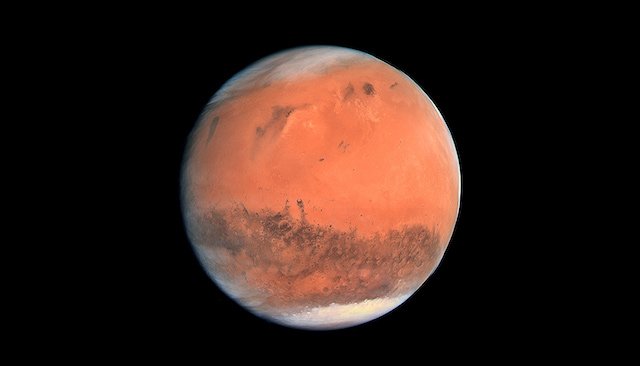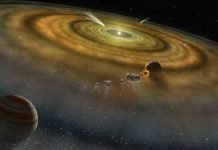
In a new study, researchers suggest a magma chamber may have been formed under the surface of Mars to help heat up the ice cap.
The research was conducted by a team from the University of Arizona.
Previous research has shown that Mars has two giant ice sheets at its poles, both about a mile thick.
Although on Earth it is common that liquid water exists underneath thick ice sheets, it was unknown if the same thing happens on Mars.
Last year, a study published in Science showed a similar phenomenon on Mars.
That team claimed radar observations detected evidence of Liquid water exists beneath the south polar ice cap of Mars.
However, that study did not address how liquid water got there.
In the current study, the researchers performed physical modeling of Mars to see how much heat is coming out of the interior of the planet.
They also examined if there could be enough salt at the base of the ice cap to melt the ice.
The results showed that salt alone could not raise enough high temperature to melt the ice.
The researchers suggested there must have been recent magmatic activity in the past hundred thousand years to get enough heat to produce the liquid water beneath the ice cap.
If there is no magma chamber formed, it is unlikely liquid water could exist underneath the ice cap.
The magma may be formed due to volcanic activity in Mars subsurface. It may be from the deep interior of Mars rose towards the planet’s surface about 300,000 years ago.
The magma was pooled in a magma chamber below the Mars surface, and it released heat that melted the ice at the base of the ice sheet.
This view is based on the idea that Mars is an active planet. It adds an important constraint on the possibility of water on Mars.
It may further the debate around the possibility of liquid water on Mars.
The presence of liquid water on Mars has implications for finding life outside of Earth. It could also serve as a resource for future human exploration.
One co-author of the study is Michael Sori, an associate staff scientist in the Lunar and Planetary Laboratory at the University of Arizona.
The study is published in Geophysical Research Letters.
Copyright © 2019 Knowridge Science Report. All rights reserved.




